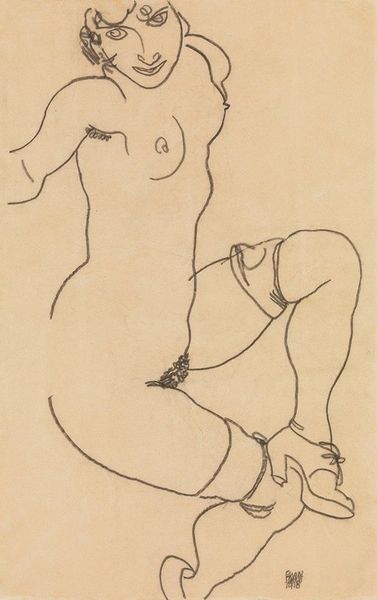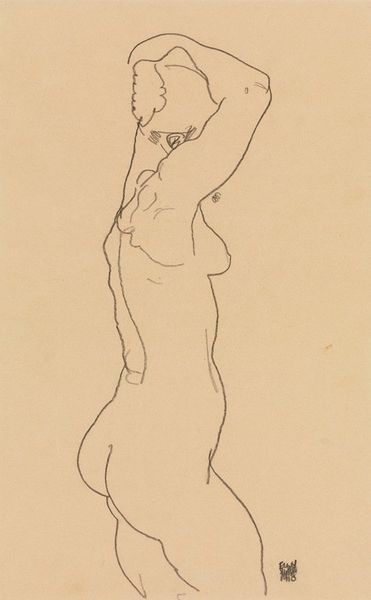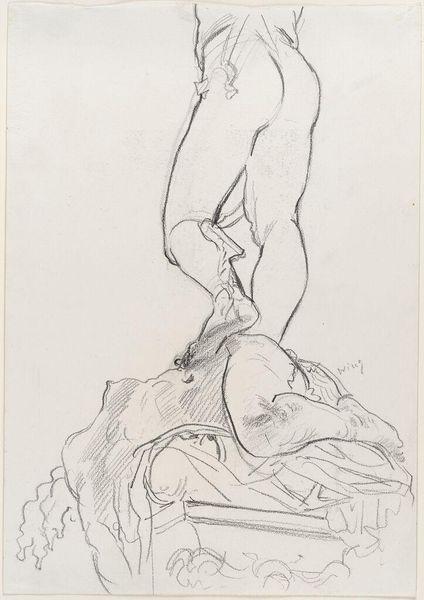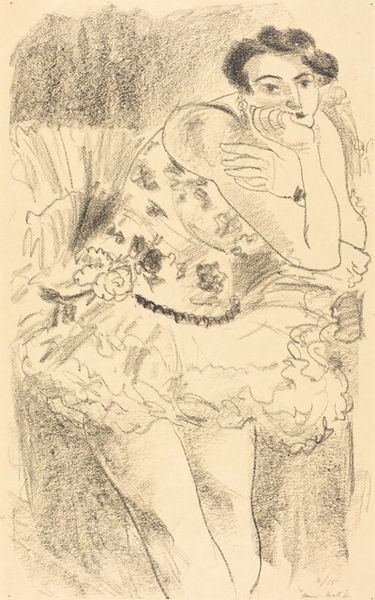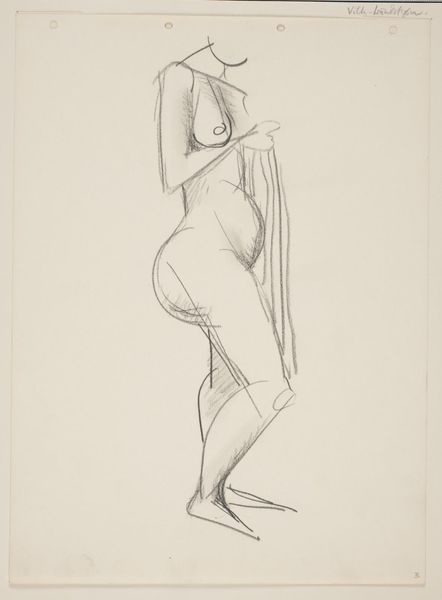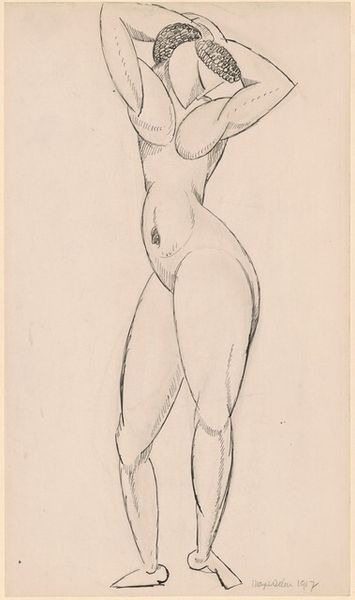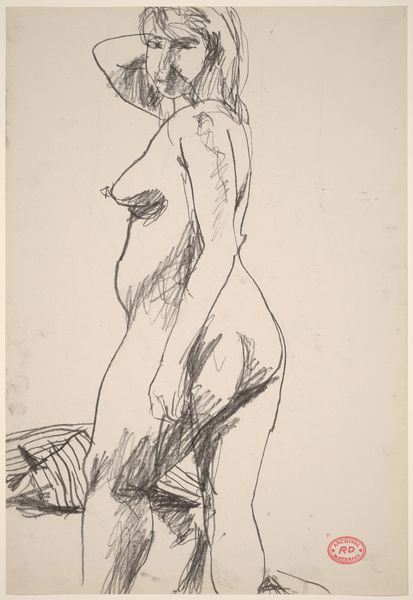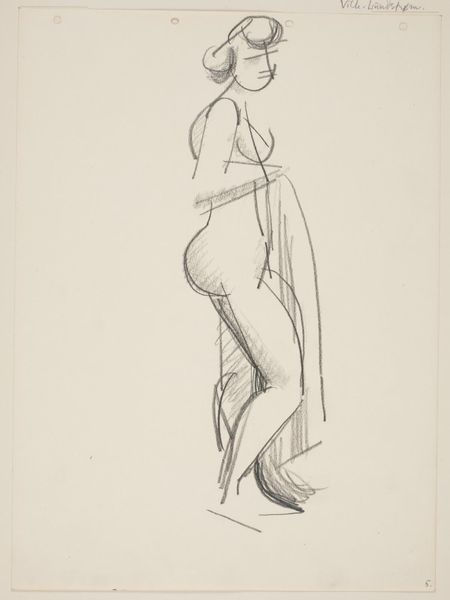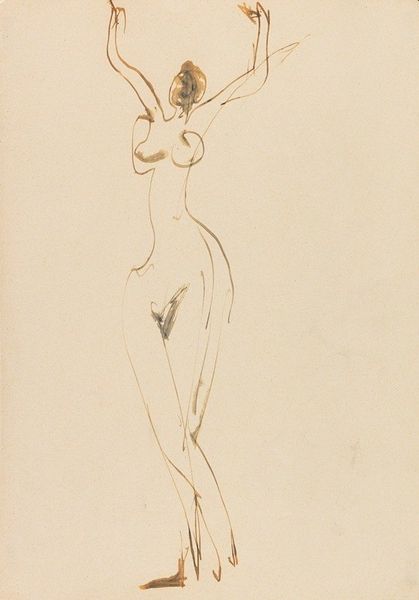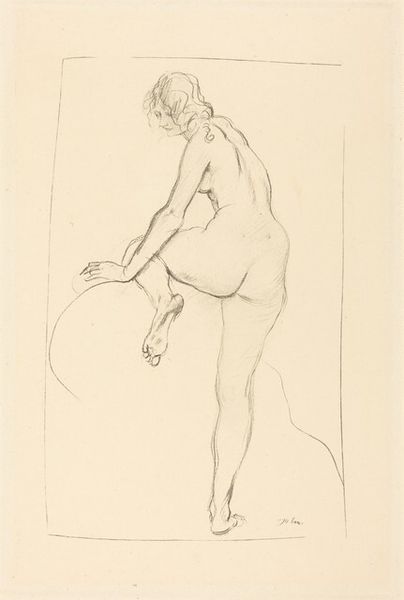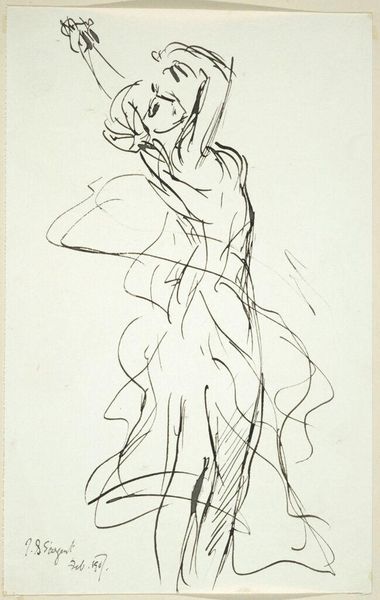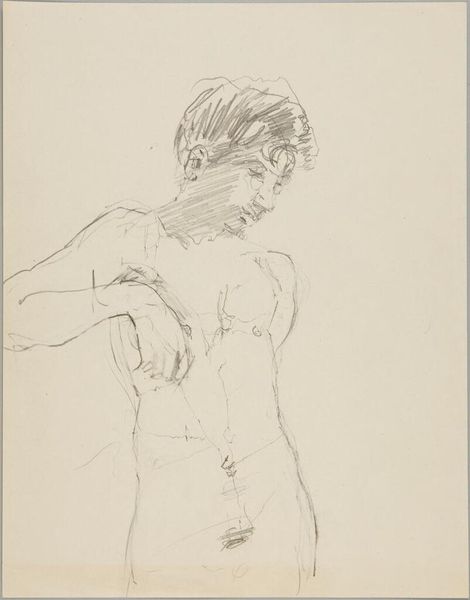
drawing
#
portrait
#
drawing
#
expressionism
#
portrait drawing
#
nude
Copyright: Public Domain: Artvee
Editor: Here we have Egon Schiele’s "Reclining Model in Chemise and Stockings" from 1917, a drawing that, to me, feels both vulnerable and a bit defiant. The stark lines and the almost awkward pose are very striking. How do you interpret this work? Curator: It's fascinating to consider Schiele's work within the socio-political context of early 20th century Vienna. The Expressionists, and Schiele in particular, were pushing against the rigid societal norms of the time, especially around sexuality and the body. Do you notice how this challenges traditional nude portraiture? Editor: Definitely. It's not idealized or romanticized. It feels much more… raw. More real, maybe. Curator: Precisely. And this rawness served a social purpose. Think about how the rise of psychoanalysis was also impacting art; exploring the hidden, sometimes uncomfortable aspects of the human psyche was becoming increasingly relevant. The exhibition spaces in which these drawings appeared would have actively contributed to a larger discourse. How might the choice of a drawing over a painting have played a role? Editor: Hmm… maybe it’s more immediate, less precious. Easier to disseminate, perhaps challenging the establishment more directly? Curator: Exactly. And think about who was seeing these works, the public reaction, and the impact on other artists. Art became a space to question power structures. The "Reclining Model" then, wasn't just an image, but a statement. Editor: That makes so much sense! I always focused on the emotion in Schiele’s work, but seeing it as a form of social commentary changes everything. Curator: Indeed, recognizing the public role of art is vital. It makes you see the drawing not just as a drawing, but as part of a bigger dialogue, then and now.
Comments
No comments
Be the first to comment and join the conversation on the ultimate creative platform.


